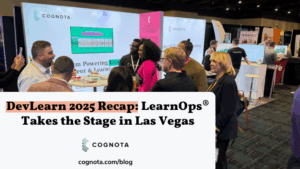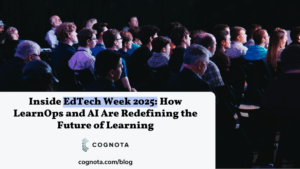Cognota caught up with our friend Jennifer Rogers from Bluewater Learning to share her value insights on how learning & development professionals should approach “the speed of business” as it pertains to their learning projects. Jennifer is the Director of Content Solutions at Bluewater Learning and has over 15 years of expereince in performance-based, high-impact learning, leveraging her credentials as both a Certified Professional in Learning and Performance (CPLP) and Project Management Professional (PMP). Jennifer translates her passion for learning transformation and innovation into actionable plans that move businesses forward.

“When I think about “the speed of business”, I start to ask myself what the word “speed” really means in todays’ corporate landscape. You can find some clues when you dig into synonyms of the word “speed”. You find words that begin to really resonate with the pace of our work today, like “readiness” and “agility”. And when you really ponder this and what it means, a different landscape begins to unfold for learning professionals. One that’s forward-looking and anticipatory, one that’s proactive and involves a true partnership with the business.
It’s really not about becoming more efficient at REACTING – it’s simply not enough to increase the rate at which we produce (and re-produce and re-produce) organizational assets. After all, learners need the RIGHT assets, not just MORE assets.
Instead, it’s about being PROACTIVE – applying principles of adaptive architecture to the design of our learning assets. Instead of building a rigid structure around our content that cannot be changed, it’s about carefully designing a flexible structure that adapts to the uniqueness of people, circumstances, and needs. Essentially,by designing with a build-once, future-proof mentality. we can design carefully, build efficiently, and deploy evergreen assets across a wide spectrum of experiences and preferences. This is where true business transformation takes place.
Keeping up with the speed of business means spending less time building rigid CONTEXT around particular assets and, instead, thoughtfully designing assets that are CONSUMER-friendly, flexible, and adaptive.”




